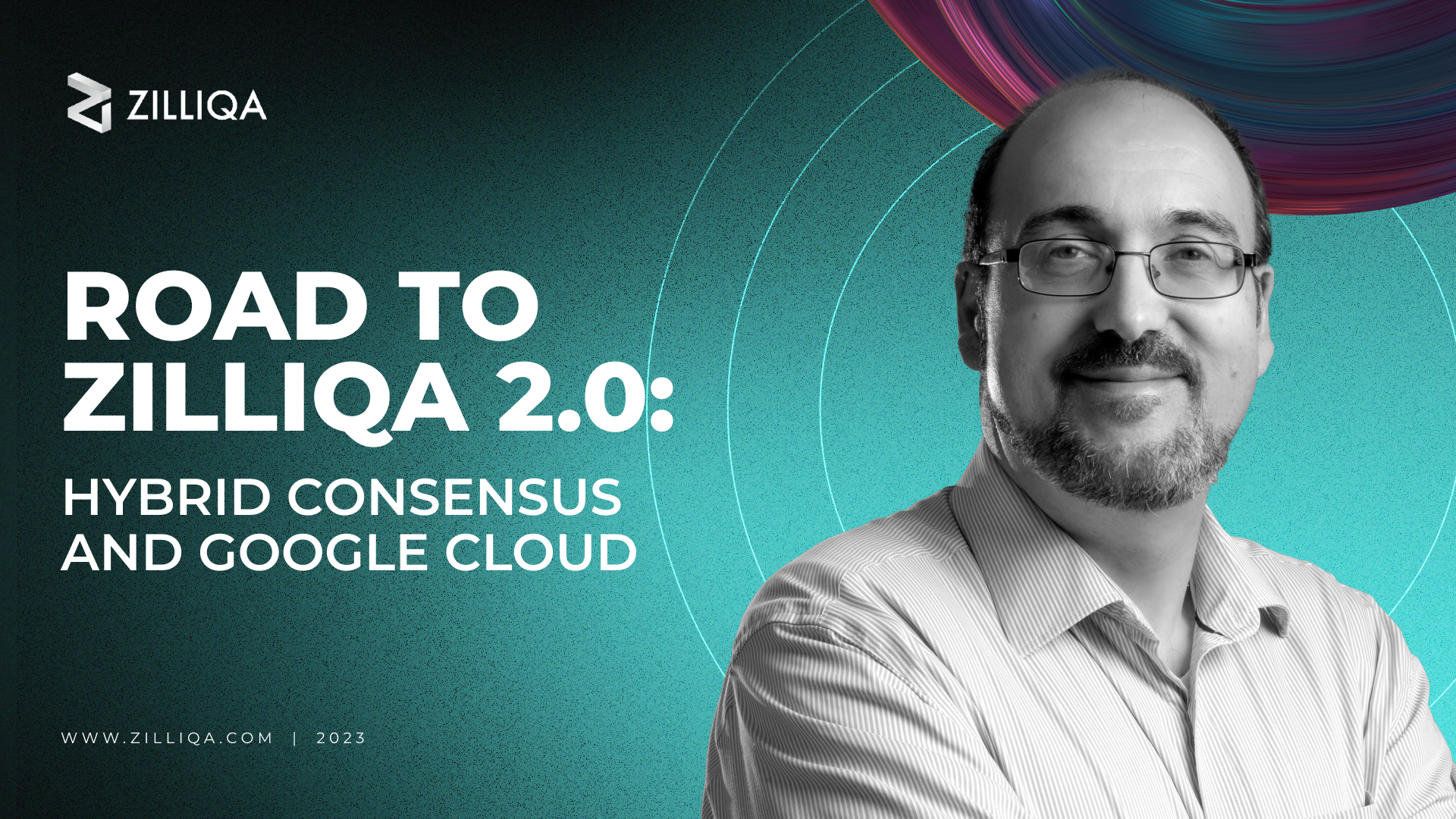Road to Zilliqa 2.0: Hybrid Consensus and Google Cloud
We spoke with Zilliqa CTO Richard Watts about Zilliqa Group’s migration to Google Cloud and the proposed changes to the network as work progresses on Zilliqa 2.0.

Zilliqa Group recently announced a strategic alliance with Google Cloud which will see the group’s infrastructure migrate to the cloud provider to boost the resilience and efficiency of services such as the Zilliqa API endpoint.
As part of this agreement, Google Cloud will also run a Staked Seed Node (SSN) on the Zilliqa network, playing a crucial role in the provision of services on the network and storing a complete record of transactions on the network.
This major announcement comes shortly after the formation of Zilliqa Group - a new corporate structure that aims to facilitate growth and opportunities for ventures building Web3 applications on the Zilliqa blockchain.
By migrating to Google Cloud, Zilliqa Group can more effectively deliver services and solutions to businesses building on the network, while also improving the efficiency of network upgrades developed by the core infrastructure team.
The Zilliqa infrastructure team continues to work on upcoming features and network upgrades on the road to Zilliqa 2.0, an overhauled version of the network which will offer various improvements such as improved flexibility, transaction throughput, and cost efficiency.
To find out more about Zilliqa Group’s migration to Google Cloud and the proposed changes to the network as work progresses on Zilliqa 2.0, we spoke to Zilliqa CTO Richard Watts.
Zilliqa Group strategy and Google Cloud
Speaking about the formation of Zilliqa Group and the migration to Google Cloud’s infrastructure platform, Richard notes that these changes greatly improve the ability to provide a reliable blockchain network and services to support businesses building on Zilliqa.
“We're pivoting to take advantage of these innovative applications of blockchain, and part of that transformation process is building a blockchain that is genuinely suitable for the 2020s, in that it is not only low cost to use, but it is low cost to run,” Richard says.
“Part of that involves transforming our cloud architecture to best of breed so as to direct as many of our resources as possible to improving our platform rather than maintaining our infrastructure.”
“That is where Google Cloud comes in. They have over-the-top services that we can leverage to support our infrastructure at a scale and with an immediacy that would be inefficient for us to replicate locally.”
The strategic alliance with Google Cloud will allow users to continue using network services as normal while the group migrates its internal infrastructure to an improved cloud environment.
“We have decided to partner with Google Cloud to provide cloud services to Zilliqa. This will mean a few things - there will be no change to the main Zilliqa API or the way it operates for anyone who's using it,” Richard says.
“Internally, where some of our servers are located will change. We are hoping that decentralisation will increase as we start hosting more nodes in different locations around the world.”
“You should find the main Zilliqa API endpoint a bit more stable and less susceptible both to occasional outages and to whole data centre outages, because when it migrates to Google Cloud, it will become more decentralised and hosted over many more data centres,” he adds,
New proposals have also been submitted for voting on the Zilliqa governance portal that will change the way miner rewards are allocated by the protocol.
“Miners will already have noticed that we have submitted some proposals to governance for adjusting mining rewards so as to make them less latency-sensitive. We hope those changes will go live in October along with our next update where we will be moving to Google Cloud, and miners will discover that their rewards become a little bit flatter,” Richard says.
“They will receive more rewards for participating and fewer rewards for participating faster. The overall level of reward is intended to remain roughly the same.”
“A positive consequence of our migration to Google Cloud is that miners who have for a long time been wanting to host on cheaper platforms than AWS a bit further away from the Zilliqa nodes can now do so,” he adds.
“As for other services you shouldn't notice very much of a change. This migration will make it easier for us to deploy upgrades and it will make Zilliqa's infrastructure more decentralised and secure, as well as a lot easier to manage.”
From an infrastructure development perspective, the shift to Google Cloud will enable the technical team to more easily deploy new network upgrades and optimise the network.
“Google Cloud's infrastructure allows us to deploy more quickly than before. It allows us to optimise our hosting much more readily and take advantage of a more integrated suite of tools,” Richard says.
“All of the higher-level services like BigQuery and binary authorisation are easy for us to make use of on Google Cloud, and therefore that allows us to spend more of our time optimising the blockchain and making it better for users while spending less time worrying about infrastructure constraints.”
Hybrid consensus and shifting to proof-of-stake for Zilliqa 2.0
As the Zilliqa infrastructure team continues to work on network upgrades on the road to Zilliqa 2.0, a number of changes have been proposed that affect the network’s consensus mechanism.
Zilliqa 2.0 will see Zilliqa network adopt a Proof-of-Stake (PoS) consensus mechanism and an improved sharding system that will deliver lower block times and faster transaction processing. As part of the migration to PoS, a hybrid consensus mechanism has been proposed that will see Staked Seed Nodes (SSNs) play a direct role in validating transactions on the network.
“Currently SSNs are archivist nodes, but one of the proposals currently open for voting under governance which we will attempt to implement in our October upgrade gives them a role in consensus as well,” Richard says.
“If that proposal is passed, SSN operators that want to earn rewards will have to validate transaction blocks themselves. This means that not only will they be providing a public archive of transactions but also preventing transactions from not being executed correctly.”
SSNs do not currently play a role in consensus, but they allow ZIL holders to stake their tokens and earn rewards for the role the node they delegate their stake to plays in recording transactions and providing services to end-users.
“SSNs offer a mechanism through which people who don't have large amounts of computing resources can participate in helping to make Zilliqa more secure and accessible,” Richard says.
“They do this by listening to traffic on the network, getting copies of blocks and the transactions mined on the blockchain, and then providing services onwards to the public.”
“After this upgrade, SSNs will also check that the transaction blocks they collect are correct. If you can't get two thirds of the participating stake on the SSNs to validate a block, then that block will be rejected. So they will also be helping to guard transaction correctness,” he explains.
Learn more about how SSNs work in the explainer posted on our blog, or read about Google Cloud hosting an SSN on the Zilliqa network.
The proposed hybrid consensus mechanism would not require mandatory participation initially, although it is expected that SSNs will begin to participate in consensus and play a role in securing the network prior to the migration to PoS with Zilliqa 2.0.
If you are a gZIL holder, have your say on the proposed hybrid consensus mechanism and cast your vote through the Zilliqa governance portal.
